Abstract
The effect of Monensin (Rumensin, Eli Lilly & Co.) in incubations with mixed rumen microorganisms metabolizing carbohydrate or protein substrates was investigated. Monensin partly inhibited methanogenesis and increased propionate production, although the effect was not always statistically significant. Incubations with substrates specific for methane bacteria suggest that inhibition of methanogenesis by Monensin was not due to a specific toxic action on the methanogenic flora, but rather to an inhibition of hydrogen production from formate. Total and net microbial growth were considerably decreased by addition of Monensin, although the amount of substrate fermented was not altered, resulting in lowered values of microbial growth efficiency. In incubations with casein, Monensin lowered protein degradation in line with a lowered ammonia production, whereas a slight accumulation of alpha-amino nitrogen was observed. The results suggest that besides an influence of Monensin on the rumen carbohydrate fermentation pattern, another reason for the beneficial effects observed in vivo might be decreased food protein degradation in the rumen, altering the final site of protein digestion in the animal. Also, the possibility of a decrease in rumen microbial growth efficiency has to be considered when using Monensin as a food additive.
Full text
PDF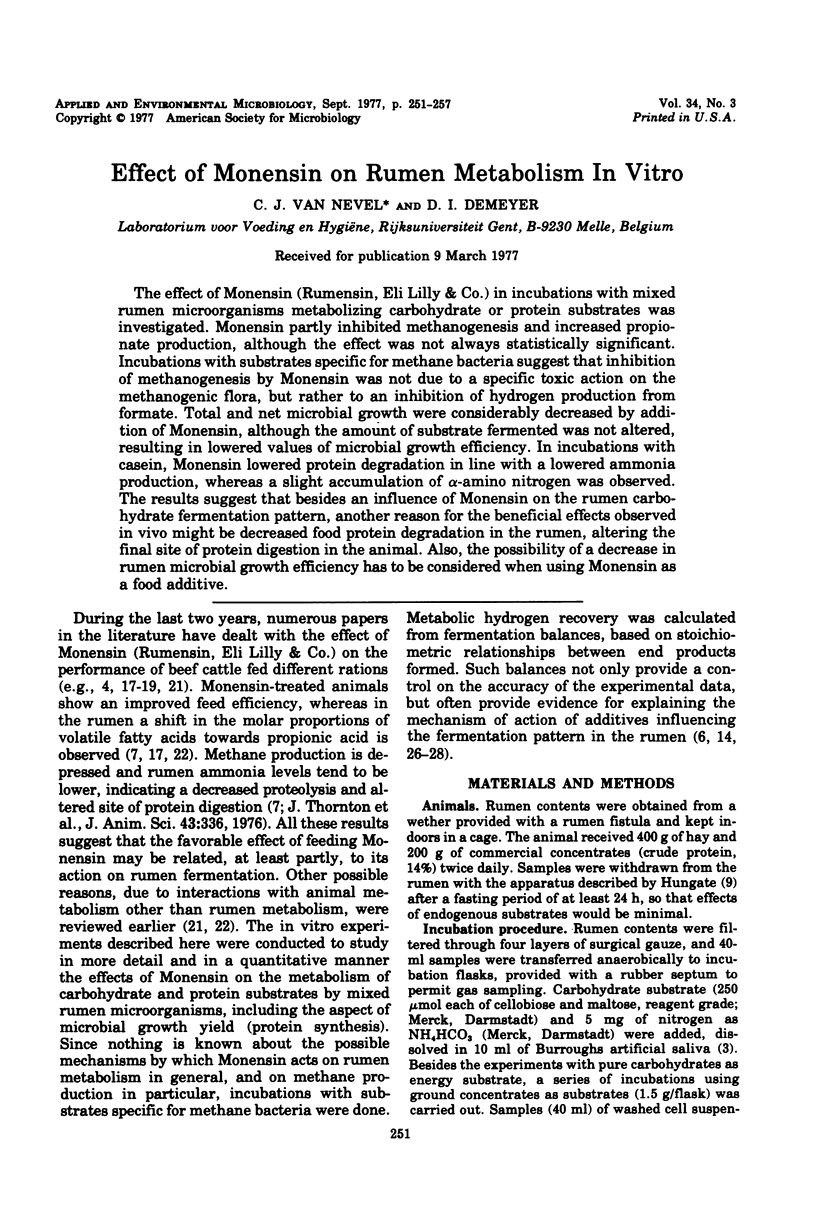
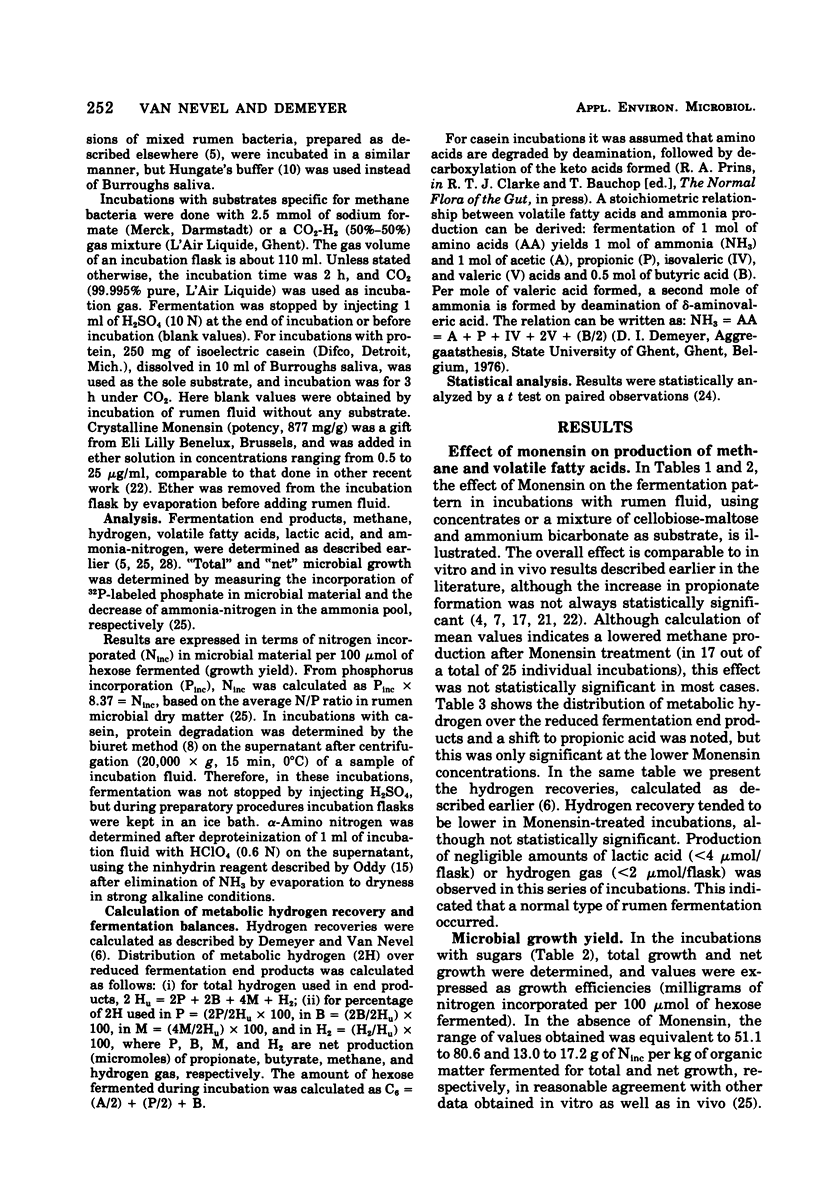
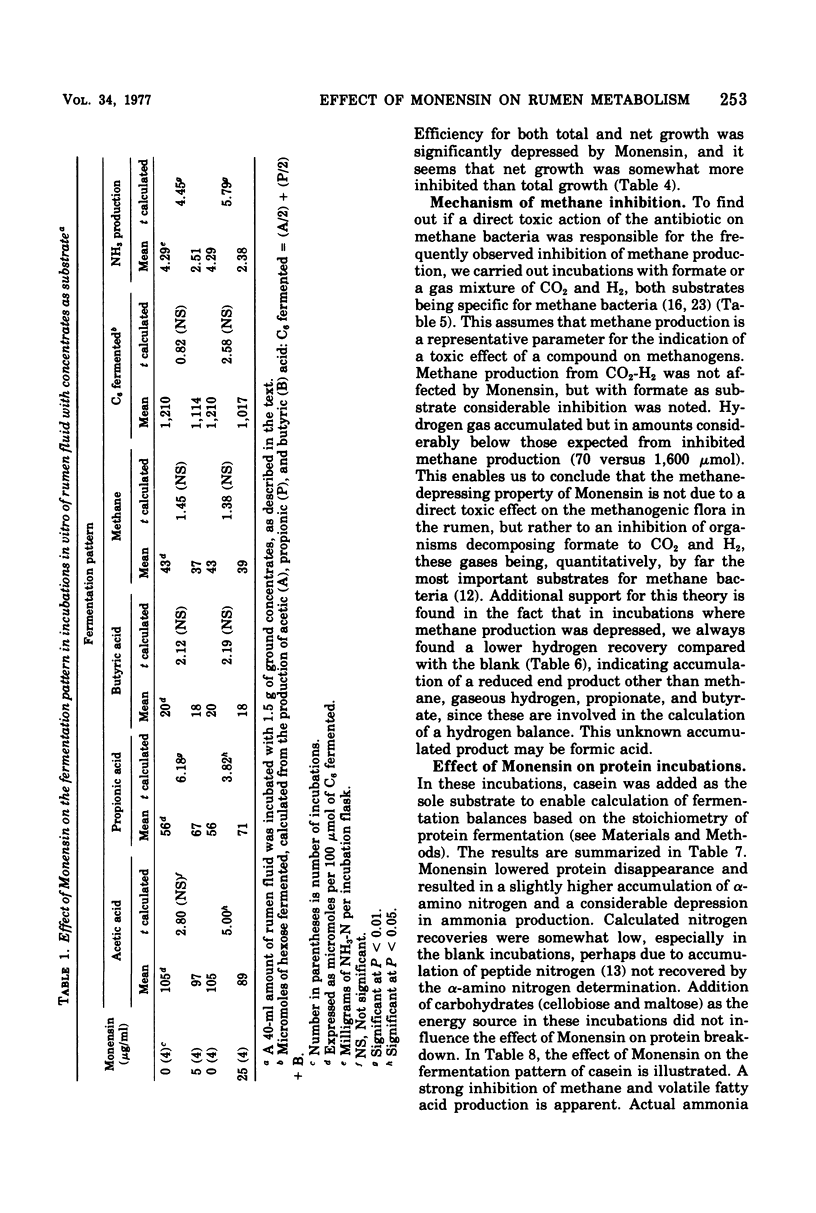
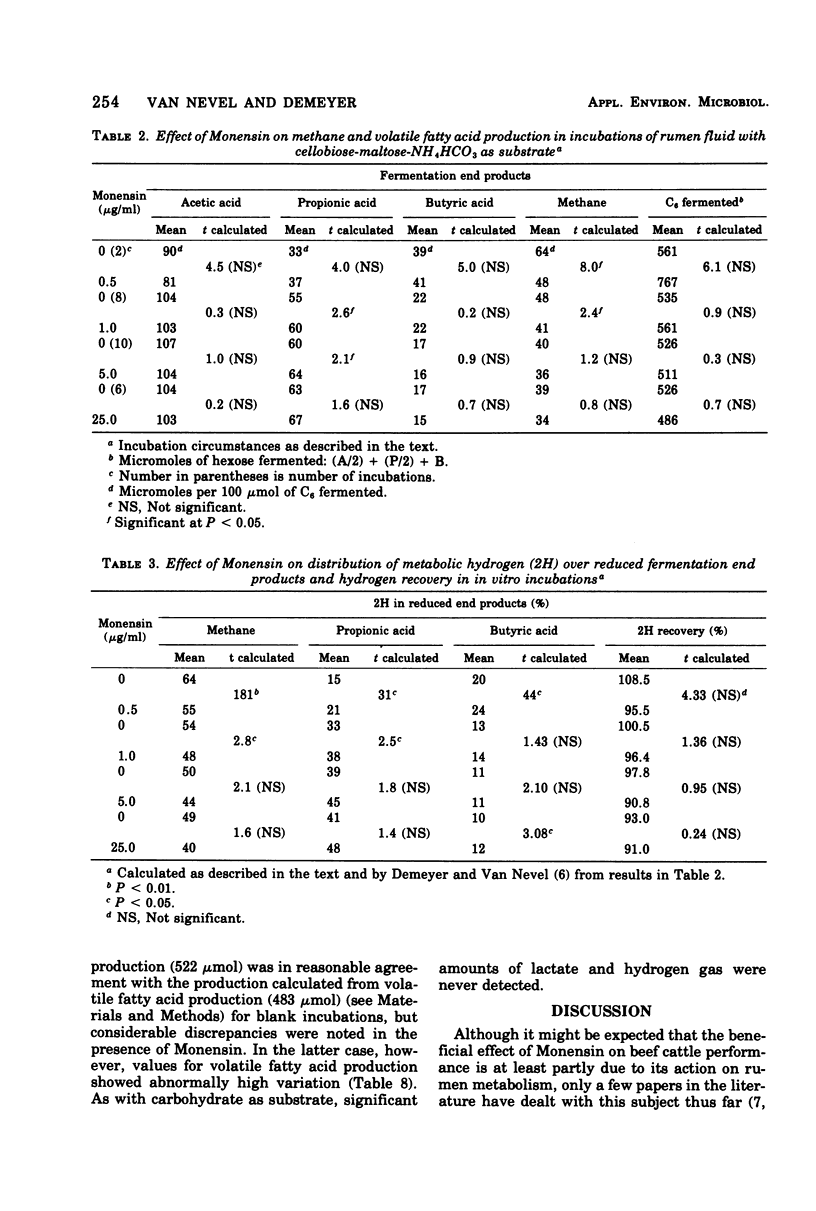
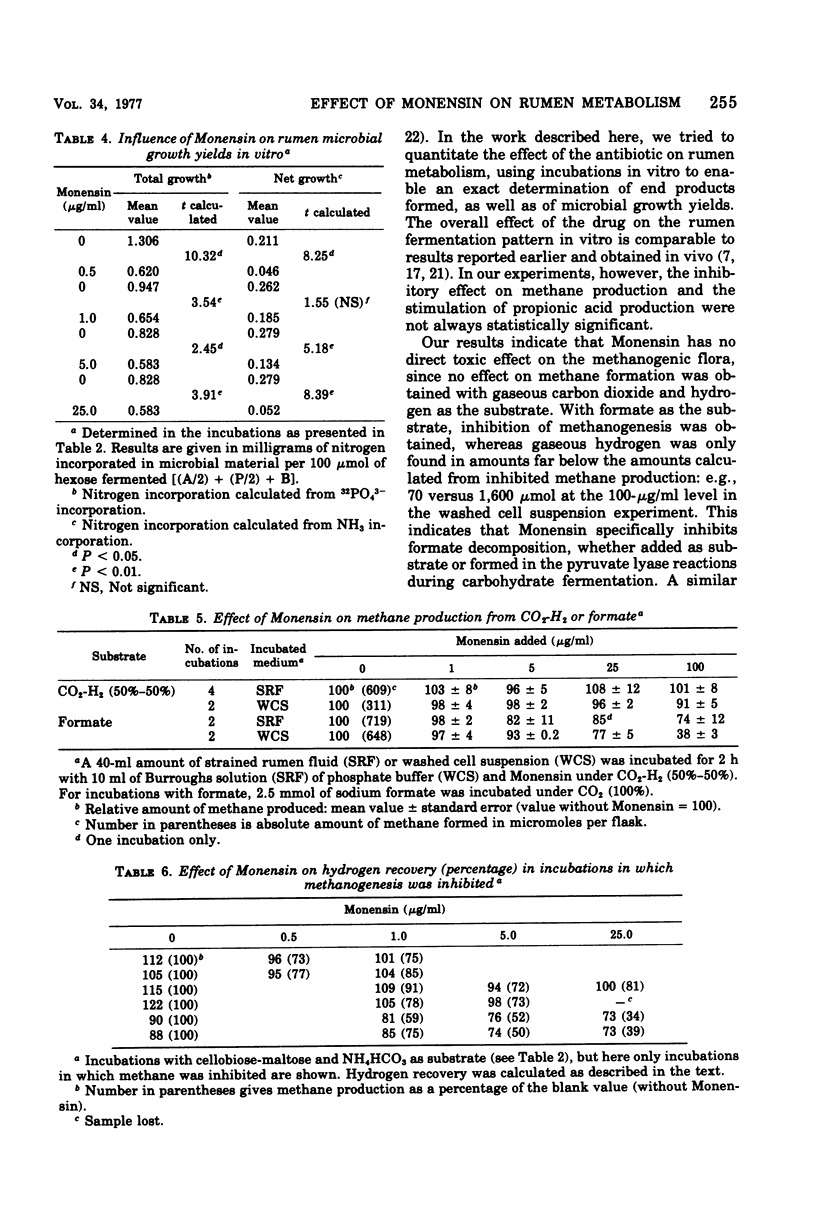
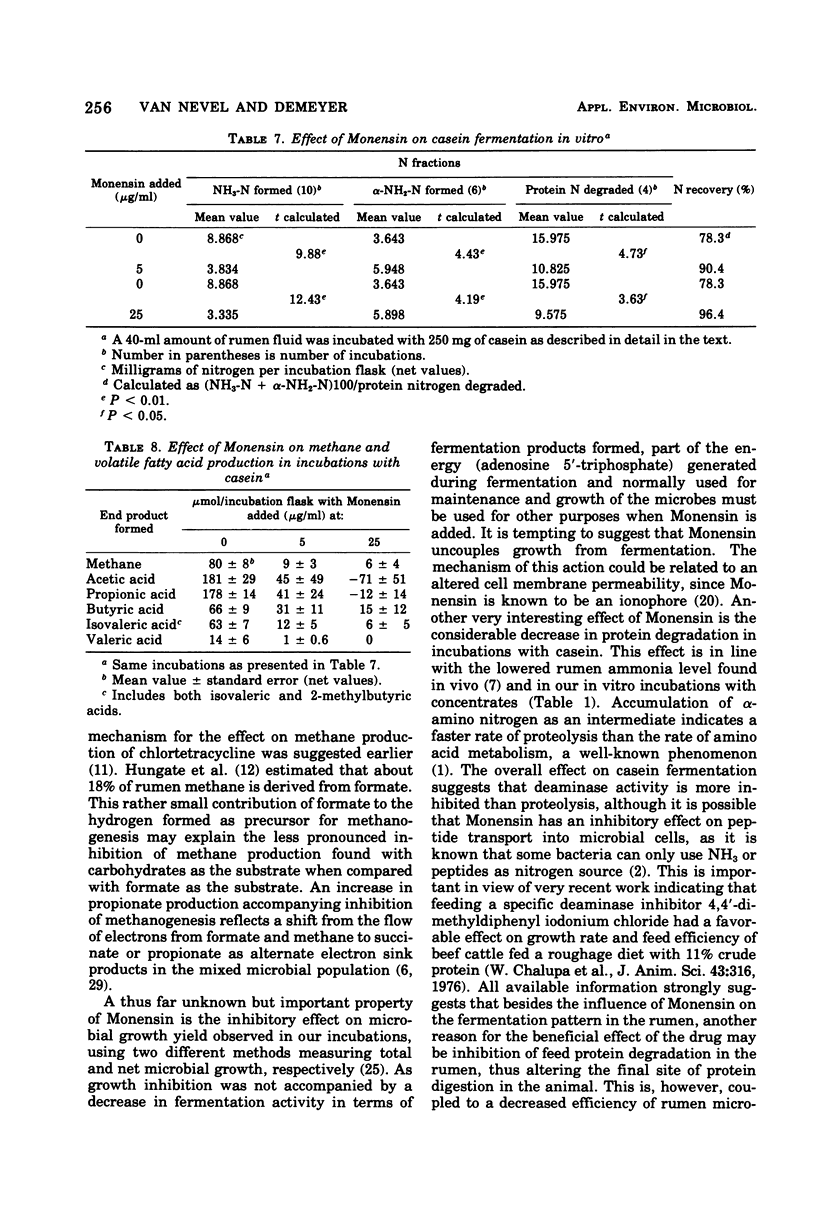
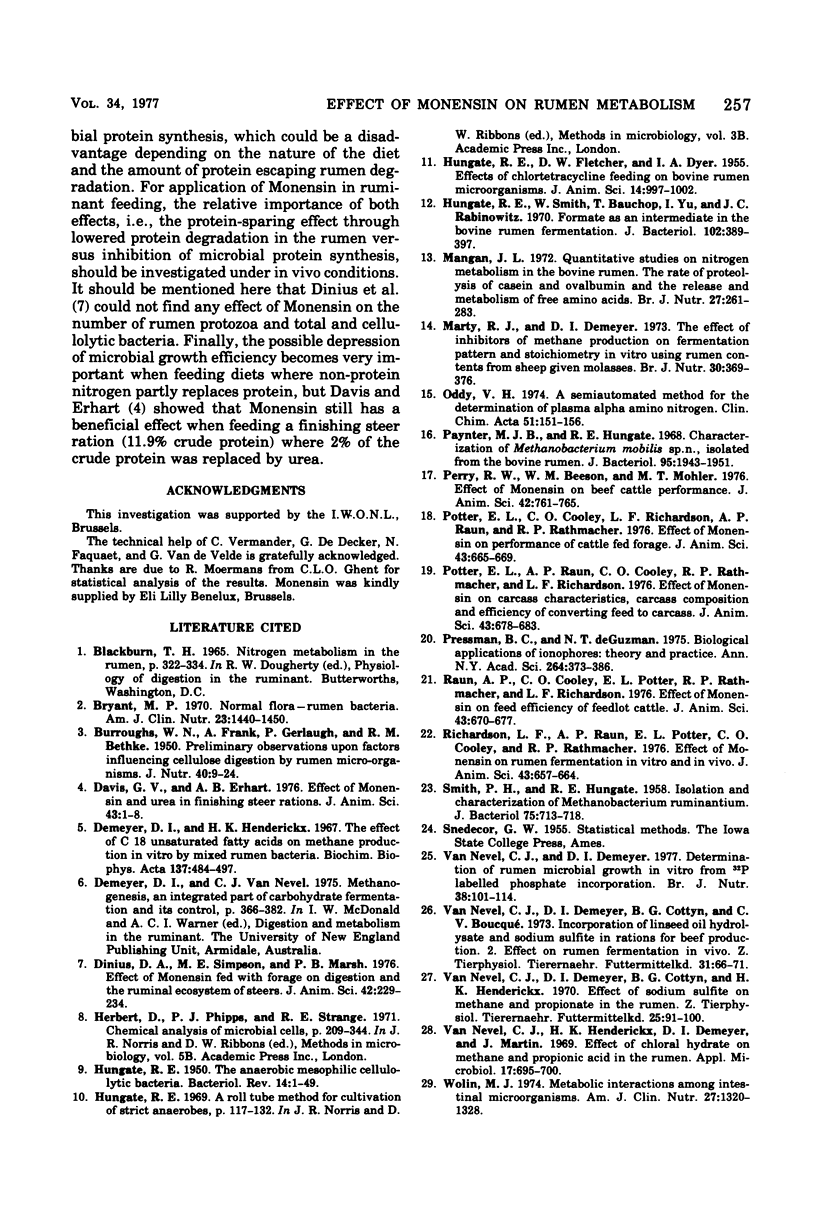
Selected References
These references are in PubMed. This may not be the complete list of references from this article.
- BURROUGHS W., FRANK N. A. Preliminary observations upon factors influencing cellulose digestion by rumen microorganisms. J Nutr. 1950 Jan;40(1):9–24. doi: 10.1093/jn/40.1.9. [DOI] [PubMed] [Google Scholar]
- Bryant M. P. Normal flora--rumen bacteria. Am J Clin Nutr. 1970 Nov;23(11):1440–1450. doi: 10.1093/ajcn/23.11.1440. [DOI] [PubMed] [Google Scholar]
- Demeyer D. I., Henderickx H. K. The effect of C18 unsaturated fatty acids of methane production in vitro by mixed rumen bacteria. Biochim Biophys Acta. 1967 Jun 6;137(3):484–497. doi: 10.1016/0005-2760(67)90130-0. [DOI] [PubMed] [Google Scholar]
- Donius D. A., Simpson M. E., Marsh P. B. Effect of monensin fed with forage on digestion and the ruminal ecosystem of steers. J Anim Sci. 1976 Jan;42(1):229–234. doi: 10.2527/jas1976.421229x. [DOI] [PubMed] [Google Scholar]
- HUNGATE R. E. The anaerobic mesophilic cellulolytic bacteria. Bacteriol Rev. 1950 Mar;14(1):1–49. doi: 10.1128/br.14.1.1-49.1950. [DOI] [PMC free article] [PubMed] [Google Scholar]
- Hungate R. E., Smith W., Bauchop T., Yu I., Rabinowitz J. C. Formate as an intermediate in the bovine rumen fermentation. J Bacteriol. 1970 May;102(2):389–397. doi: 10.1128/jb.102.2.389-397.1970. [DOI] [PMC free article] [PubMed] [Google Scholar]
- Mangan J. L. Quantitative studies on nitrogen metabolism in the bovine rumen. The rate of proteolysis of casein and ovalbumin and the release and metabolism of free amino acids. Br J Nutr. 1972 Mar;27(2):261–283. doi: 10.1079/bjn19720092. [DOI] [PubMed] [Google Scholar]
- Marty R. J., Demeyer D. I. The effect of inhibitors of methane production on fermentation pattern and stoichiometry in vitro using rumen contents from sheep given molasses. Br J Nutr. 1973 Sep;30(2):369–376. doi: 10.1079/bjn19730041. [DOI] [PubMed] [Google Scholar]
- Oddy V. H. A semiautomated method for the determination of plasma alpha amino nitrogen. Clin Chim Acta. 1974 Mar 15;51(2):151–156. doi: 10.1016/0009-8981(74)90024-2. [DOI] [PubMed] [Google Scholar]
- Paynter M. J., Hungate R. E. Characterization of Methanobacterium mobilis, sp. n., isolated from the bovine rumen. J Bacteriol. 1968 May;95(5):1943–1951. doi: 10.1128/jb.95.5.1943-1951.1968. [DOI] [PMC free article] [PubMed] [Google Scholar]
- Pressman B. C., deGuzman N. T. Biological applications of ionophores: theory and practice. Ann N Y Acad Sci. 1975 Dec 30;264:373–386. doi: 10.1111/j.1749-6632.1975.tb31497.x. [DOI] [PubMed] [Google Scholar]
- SMITH P. H., HUNGATE R. E. Isolation and characterization of Methanobacterium ruminantium n. sp. J Bacteriol. 1958 Jun;75(6):713–718. doi: 10.1128/jb.75.6.713-718.1958. [DOI] [PMC free article] [PubMed] [Google Scholar]
- Van Nevel C. J., Demeyer D. I., Cottyn B. G., Henderickx H. K. Effect of sodium sulfite on methane and propionate in the rumen. Z Tierphysiol Tierernahr Futtermittelkd. 1970 Mar;26(2):91–100. doi: 10.1111/j.1439-0396.1970.tb00128.x. [DOI] [PubMed] [Google Scholar]
- Van Nevel C. J., Henderickx H. K., Demeyer D. I., Martin J. Effect of chloral hydrate on methane and propionic acid in the rumen. Appl Microbiol. 1969 May;17(5):695–700. doi: 10.1128/am.17.5.695-700.1969. [DOI] [PMC free article] [PubMed] [Google Scholar]
- Wolin M. J. Metabolic interactions among intestinal microorganisms. Am J Clin Nutr. 1974 Nov;27(11):1320–1328. doi: 10.1093/ajcn/27.11.1320. [DOI] [PubMed] [Google Scholar]
- van Nevel C. J., Demeyer D. I., Cottyn B. G., Boucqué C. V. Incorporation of linseed oil hydrolysate and sodium sulfite in rations for beef production. 2. Effect on rumen fermentation in vivo. Z Tierphysiol Tierernahr Futtermittelkd. 1973 Mar;31(2):66–71. doi: 10.1111/j.1439-0396.1973.tb01262.x. [DOI] [PubMed] [Google Scholar]
- van Nevel C. J., Demeyer D. I. Determination of rumen microbial growth in vitro from 32P-labelled phosphate incorporation. Br J Nutr. 1977 Jul;38(1):101–114. doi: 10.1079/bjn19770066. [DOI] [PubMed] [Google Scholar]


